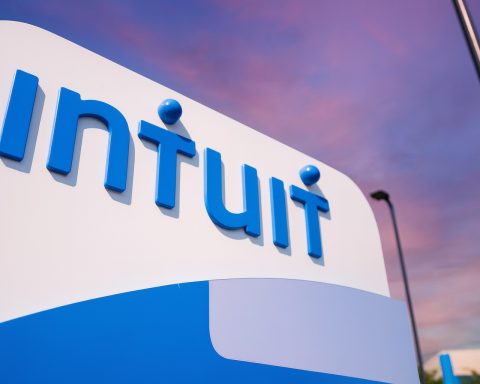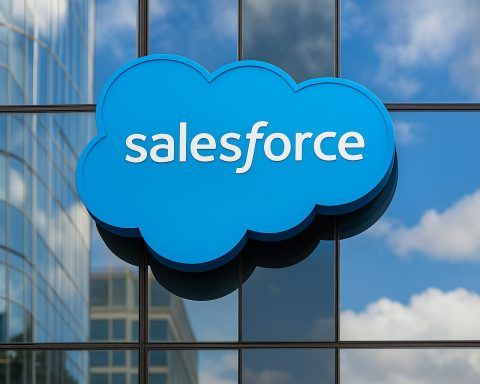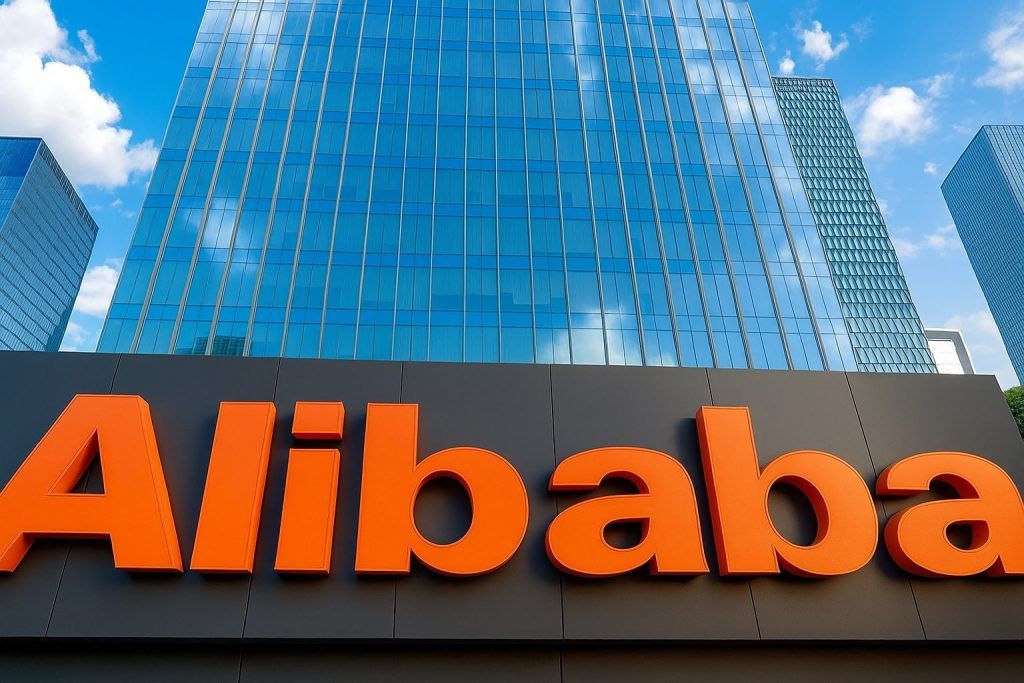Key things to know before Monday’s bell
- Oracle closed Friday at about $223 after a small rebound, but the stock is still down roughly 25–30% over the past month. [1]
- The sell‑off is being driven by concerns over a planned $38 billion debt raise for AI data centers and already heavy leverage of around $100+ billion in total debt. [2]
- Oracle’s huge AI bets with OpenAI (including a $300 billion compute deal and the $500 billion “Stargate” project) are now being questioned as OpenAI also signs a $38 billion cloud deal with AWS. [3]
- Michael Burry has publicly accused Oracle and other AI leaders of overstating earnings by using long depreciation schedules for AI hardware, adding to valuation worries. [4]
- Despite the turbulence, Wall Street’s 12‑month price targets still average in the low‑to‑mid $300s, with several big firms sticking to $400+ targets ahead of Oracle’s December 8 earnings report. [5]
Below is a detailed, news‑style breakdown of what matters for Oracle stock going into the U.S. market open on Monday, November 17, 2025.
1. Price snapshot: where Oracle stands heading into November 17
Oracle shares finished Friday, November 14, at $222.85 on the NYSE, up about 2.4% on the day after a bruising week. [6]
Over a slightly longer horizon, the picture is still harsh:
- Over the month ending November 13, Oracle lost 29.4%, according to MoneyWeek. [7]
- The Financial Times likewise notes a roughly 25% one‑month slide, making Oracle the worst‑performing major “hyperscaler” over that period. [8]
- That pullback comes just weeks after a September spike of around 36% on the back of blockbuster AI infrastructure forecasts and new cloud contracts. [9]
From a valuation standpoint, even after this correction:
- Oracle trades at roughly 50x trailing earnings and about 31–36x forward earnings, depending on the source. [10]
Those multiples are elevated versus the broader market and are a big part of why the recent shift in sentiment has hit the stock so hard.
2. AI spending and the $38 billion debt question
The single biggest near‑term overhang on Oracle is how it is funding its AI ambitions.
A rapidly growing debt pile
A widely‑cited Reuters report says Oracle is preparing to raise another $38 billion in debt to finance AI and cloud infrastructure, on top of an already heavy debt load of roughly $104 billion, including about $18 billion in bonds. [11]
That has several immediate consequences:
- Oracle’s bonds have sold off, with yields on key maturities rising as investors demand higher compensation for risk. [12]
- Broader coverage of the AI debt boom shows credit spreads for big tech issuers widening, and Oracle is frequently cited as one of the more aggressive borrowers in the group. [13]
- The FT recently highlighted projections that Oracle’s long‑term debt could reach around $290 billion by 2028 if planned projects are fully financed, while the company runs negative free cash flow—a stark contrast to cash‑rich peers like Microsoft and Alphabet. [14]
For Monday’s open, traders will be watching for:
- Any new commentary on bond spreads or credit‑rating outlooks,
- Signs that the planned $38 billion raise may be scaled back, delayed, or repriced,
- And whether further pressure appears in tech‑credit ETFs or corporate bond funds that hold Oracle paper.
3. Oracle, OpenAI and the reshaping AI‑cloud landscape
Oracle’s entire 2025 story has been dominated by its attempt to become one of the core infrastructure providers for generative AI, with OpenAI at the center of the narrative.
From euphoria…
Back in September, Oracle shares soared more than 35% in a single session after executives touted:
- A $300 billion+ compute power deal with OpenAI,
- A remaining performance obligation (RPO) backlog of roughly $455 billion, up more than 350% year‑on‑year, and
- An aggressive roadmap to grow Oracle Cloud Infrastructure (OCI) revenue from $18 billion in fiscal 2026 to as high as $144–166 billion by 2030. [15]
Meanwhile, the Stargate initiative — a joint project between OpenAI, Oracle, SoftBank and others — envisions up to $500 billion in investment to build AI mega‑data centers delivering 10 gigawatts of compute. Recent announcements have laid out five new U.S. data center sites, with Oracle responsible for several locations in Texas, New Mexico and the Midwest. [16]
…to skepticism
The tone has changed sharply in November:
- MoneyWeek points out that Oracle’s stock has not only surrendered its post‑announcement gains but is now trading nearly 10% below pre‑OpenAI‑deal levels, raising the question of whether the rally was overdone. [17]
- A Barron’s piece titled “Oracle Stock Is a Bet on OpenAI — and Investors Are Cashing In Their Chips” argues the stock is effectively a leveraged proxy for OpenAI risk, noting rising short interest and a downgrade of Oracle’s corporate debt outlook by Barclays. [18]
On top of that, OpenAI has just signed a new seven‑year, $38 billion cloud deal with Amazon Web Services, giving AWS a meaningful slice of the startup’s massive infrastructure spend and ending any notion of exclusivity with earlier partners. [19]
For Oracle investors, that raises key questions ahead of Monday’s open:
- How large is Oracle’s true share of OpenAI’s long‑term spend, now that AWS (and Microsoft) are also deeply involved?
- Are the multihundred‑billion‑dollar contract figures fully backed by enforceable, long‑dated commitments, or more indicative pipeline targets? [20]
Any fresh reporting on OpenAI’s finances, its partnerships, or potential regulatory scrutiny could quickly spill over into Oracle’s stock.
4. New pressure from Michael Burry and accounting concerns
Adding fuel to the fire, Michael Burry—the investor made famous by The Big Short—has publicly criticized Oracle and other AI‑heavy tech giants over their accounting for AI hardware.
According to MarketWatch, Burry argues that companies including Oracle are:
- Depreciating AI networking and compute equipment over five to six years,
- Even though GPUs and related chips often follow two‑ to three‑year product cycles,
which, in his view, artificially boosts reported earnings. His analysis suggests Oracle’s earnings could be overstated by roughly 27% between 2026 and 2028 if more conservative depreciation assumptions were used. [21]
This matters for Monday’s trading because:
- Many valuation frameworks for ORCL rely on forward EPS estimates,
- Any shift in the market narrative—from “hyper‑growth AI winner” to “aggressively accounted AI bet”—could compress the premium multiples investors have been willing to pay.
So far, there’s no indication of regulatory action, but if auditors or regulators start asking similar questions, the issue could move from headline risk to earnings risk.
5. Under the hood: fundamentals still look strong (for now)
Despite the recent price and credit turmoil, Oracle’s underlying business metrics remain robust going into the week.
Revenue and earnings growth
- For the fiscal year ended May 31, 2025, Oracle generated $57.4 billion in revenue, up 8.4% year‑on‑year, with net income of $12.44 billion, up nearly 19%. [22]
- In Q4 FY2025, Oracle beat revenue expectations (about $15.9 billion vs. $15.59 billion consensus) and raised its fiscal 2026 revenue growth forecast to at least 16–17%, driven largely by AI‑related cloud demand. [23]
- In Q1 FY2026 (reported September 9), the company delivered EPS of $1.47, above the $1.35 expected, and management previewed an ambitious path for OCI: 77% revenue growth to $18 billion this fiscal year, then a multi‑year ramp to $32, $73, $114 and $144 billion. [24]
Those figures underpinned the explosive rally earlier in the year and are still central to the bullish argument that Oracle has finally achieved escape velocity in cloud infrastructure.
Analyst expectations ahead of December earnings
Wall Street remains broadly constructive—at least on paper:
- MarketBeat data shows an average 12‑month target around $323, with a range from roughly $130 to $410. [25]
- TipRanks and other services put the average target closer to $350, with several firms—including Jefferies, Mizuho and Guggenheim—anchored at $400 price targets even after the sell‑off. [26]
- StockAnalysis aggregates 32 analysts with a consensus “Buy” rating and an average target of about $334, implying roughly 50% upside from current levels. [27]
Looking ahead, Oracle is scheduled to report Q2 FY2026 earnings on December 8, 2025, with consensus estimates around $1.50 in EPS. [28]
That December print is widely viewed as a make‑or‑break moment: any indication that AI cloud margins are weaker than implied by earlier guidance could force a re‑rating of those lofty analyst targets.
6. Leadership changes and the November 18 shareholder meeting
Corporate governance is another moving piece investors should keep on their radar this week.
In a recent leadership shake‑up, Oracle:
- Named Clay Magouyrk and Mike Sicilia as co‑CEOs,
- While long‑time CEO Safra Catz transitions to executive vice chair of the board. [29]
Magouyrk previously led Oracle Cloud Infrastructure, and Sicilia headed industry applications, including healthcare—both central pillars of Oracle’s AI strategy. The move effectively formalizes the shift from Oracle’s traditional database/software roots to an AI‑driven cloud infrastructure company.
On Tuesday, November 18, Oracle will hold its 2025 Annual Meeting of Stockholders at 9:00 a.m. Central Time. [30]
That meeting lands one day after the session you’re preparing for now and could bring:
- Sharper shareholder questioning around the $38 billion debt plan,
- Requests for more granular disclosure on AI contract terms, margins and cancellation risks,
- And queries about succession planning and how responsibilities will be split between the new co‑CEOs and Safra Catz.
Any headline or soundbite from that meeting—especially about capital allocation or leverage—could retroactively color how traders interpret Monday’s price action.
7. Institutional & insider moves: subtle but important signals
Fresh SEC filings show a mix of profit‑taking and repositioning among institutions and insiders:
- Crossmark Global Holdings trimmed its Oracle stake by about 1.7% in Q2, selling 4,106 shares but still holding more than 238,000 shares worth roughly $52 million. The same report notes significant insider selling over the last quarter, totaling more than 200,000 shares. [31]
None of these moves are massive in isolation, but combined with the valuation debate and bond‑market jitters, they reinforce the idea that some sophisticated investors are de‑risking around Oracle’s AI story.
8. Macro backdrop: tech bounce or dead‑cat?
After a bruising stretch for tech, Friday’s U.S. session ended with a modest rebound:
- The Nasdaq Composite snapped a three‑day losing streak, while the S&P 500 finished roughly flat and the Dow edged lower.
- Stocks like Nvidia and Oracle bounced after sharp prior losses, helping the tech sector recover a slice of ground lost earlier in the week. [32]
Even so, investors remain wary:
- Concerns over “AI bubble” valuations,
- Rising interest‑rate uncertainty as markets scale back expectations for a December rate cut,
- And the heavy use of debt and long‑dated leases to finance AI data centers all contribute to elevated volatility. [33]
For Oracle specifically, that means Monday’s open will be driven not just by company headlines, but by:
- The direction of the broader AI trade (Nvidia, Amazon, Microsoft, Meta, etc.),
- Any overnight moves in Treasury yields and credit markets, and
- Risk‑on vs. risk‑off flows across the tech complex.
9. What to watch in Oracle stock at Monday’s open
If you’re following ORCL as markets open on November 17, here are the practical levers to monitor:
- Pre‑market quotes and volume in ORCL and AI peers
- A strong risk‑on tone in Nvidia, Amazon, Microsoft and other AI names could help extend Friday’s bounce; another wave of selling could drag Oracle lower regardless of company‑specific news.
- Any updates on Oracle’s planned $38B financing
- A confirmed bond issuance, changes to terms, or a ratings‑agency move could give the stock a sharp jolt either way. [34]
- Fresh commentary on OpenAI’s spending plans
- Follow‑up coverage of the OpenAI–AWS $38 billion deal, leaked documents on OpenAI’s costs, or new details on Microsoft’s write‑down of its OpenAI stake could all reshape how sustainable Oracle’s AI backlog looks. [35]
- Analyst actions and research notes
- We’ve already seen Mizuho, Guggenheim, Jefferies and others reiterate bullish targets around $375–$400, even as stocks fell. More downgrades—or, conversely, calls that the sell‑off has gone too far—could influence day‑one sentiment. [36]
- Options positioning and short‑interest chatter
- With Oracle increasingly described as a “proxy short” on OpenAI, traders will pay attention to headlines about rising short interest and any signs of a short squeeze after sharp intraday moves. [37]
10. Risk checklist for Oracle watchers
Going into November 17, the bull case rests on:
- Strong underlying cloud and AI revenue growth,
- Massive multi‑year contract backlog,
- And a still‑supportive sell‑side analyst community with targets well above current levels. [38]
The bear case hinges on:
- Heavy and rising leverage with a large new debt raise looming, [39]
- Dependence on a handful of large, capital‑intensive AI customers—chiefly OpenAI—whose own economics are under scrutiny, [40]
- Potential earnings‑quality questions raised by Michael Burry and others over depreciation policies, [41]
- And valuations that remain rich relative to history, even after a 25–30% pullback. [42]
Final note
Nothing here is investment advice or a recommendation to buy or sell Oracle shares. It’s a synthesis of current, publicly reported information to help you understand what the market is likely to focus on when the U.S. stock market opens on November 17, 2025. Always consider your own risk tolerance, investment horizon and, if needed, consult a qualified financial advisor before making trading decisions.
References
1. investor.oracle.com, 2. www.reuters.com, 3. www.folio3.ai, 4. www.marketwatch.com, 5. www.marketbeat.com, 6. investor.oracle.com, 7. moneyweek.com, 8. www.ft.com, 9. www.folio3.ai, 10. stockanalysis.com, 11. www.reuters.com, 12. www.reuters.com, 13. www.ft.com, 14. www.ft.com, 15. www.folio3.ai, 16. www.reuters.com, 17. moneyweek.com, 18. www.barrons.com, 19. www.reuters.com, 20. moneyweek.com, 21. www.marketwatch.com, 22. stockanalysis.com, 23. www.reuters.com, 24. investor.oracle.com, 25. www.marketbeat.com, 26. www.tipranks.com, 27. stockanalysis.com, 28. public.com, 29. apnews.com, 30. investor.oracle.com, 31. www.marketbeat.com, 32. m.economictimes.com, 33. www.ft.com, 34. www.reuters.com, 35. www.reuters.com, 36. www.barrons.com, 37. www.barrons.com, 38. www.alpha-sense.com, 39. www.reuters.com, 40. moneyweek.com, 41. www.marketwatch.com, 42. stockanalysis.com







